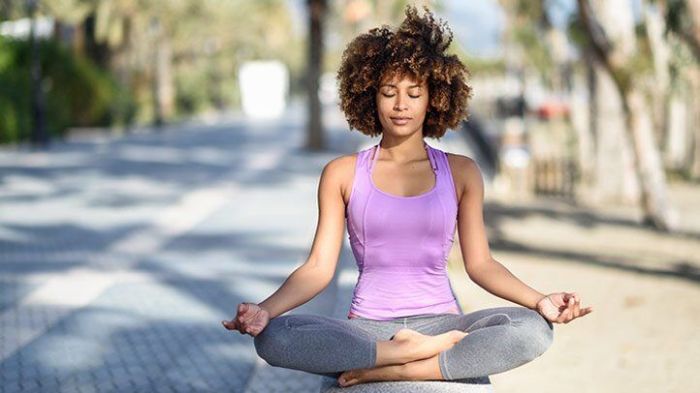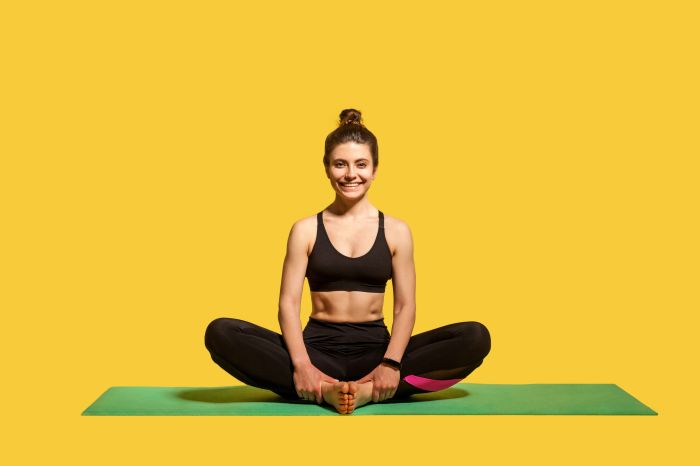Yoga for Beginners introduces a journey into the world of flexibility, mental well-being, and ultimate relaxation. Dive into the basics of yoga poses, tips for starting your practice, and creating your zen space at home. Get ready for a transformative experience!
Whether you’re a newbie or looking to enhance your practice, this guide will provide all the essentials to kickstart your yoga journey.
Benefits of Yoga for Beginners
Yoga offers a wide range of benefits for beginners, from physical to mental well-being.
Improved Flexibility
Yoga is known for its ability to increase flexibility in the body through various poses and stretches. Beginners can gradually improve their range of motion and muscle flexibility over time.
Mental Health Benefits
Practicing yoga can have a positive impact on mental health by reducing anxiety, depression, and improving overall mood. It promotes mindfulness and helps individuals focus on the present moment.
Stress Relief and Relaxation
Yoga provides a calming effect on the mind and body, helping beginners manage stress and find relaxation. Breathing techniques and meditation incorporated in yoga practice can aid in stress relief and promote a sense of inner peace.
Essential Yoga Poses for Beginners

Yoga poses, also known as asanas, are the foundation of a yoga practice. Here are some easy yoga poses suitable for beginners that can help build strength, flexibility, and balance.
Mountain Pose (Tadasana)
In Mountain Pose, stand tall with your feet hip-width apart, arms relaxed by your sides, and shoulders rolled back. Engage your core, lengthen your spine, and gaze forward. This pose helps improve posture and balance.
Child’s Pose (Balasana)
To practice Child’s Pose, start on your hands and knees, then sit back on your heels with arms extended in front of you. Rest your forehead on the mat and breathe deeply. This relaxing pose stretches the back and shoulders.
Downward Facing Dog (Adho Mukha Svanasana)
Begin in a plank position, then lift your hips up and back, forming an inverted V shape with your body. Press your hands into the mat and heels towards the floor. Downward Dog strengthens the arms and legs while stretching the back.
Warrior I (Virabhadrasana I)
From a lunge position, extend one leg back and bend the front knee at a 90-degree angle. Raise your arms overhead, keeping shoulders relaxed. Warrior I builds strength in the legs and opens the hips and chest.
Corpse Pose (Savasana)
To practice Corpse Pose, lie flat on your back with legs extended and arms by your sides. Close your eyes, relax your body, and focus on deep breathing. This final relaxation pose allows for complete rest and rejuvenation.
Modifications for Beginners:
– Use props like blocks or straps to assist in poses that require flexibility.
– For balance poses, practice near a wall or chair for support.
– Take breaks when needed and listen to your body’s limits.
Tips for Starting a Yoga Practice

Starting a yoga practice can be exciting and rewarding, but it’s essential to approach it with the right mindset and knowledge. Here are some tips to help beginners kickstart their yoga journey:
Practice Frequency
- Consistency is key when starting a yoga practice. Aim to practice at least 2-3 times a week to build strength, flexibility, and mindfulness.
- Start with shorter sessions, around 20-30 minutes, and gradually increase the duration as you become more comfortable and confident in your practice.
Finding a Suitable Yoga Studio or Class
- Look for beginner-friendly classes or studios that offer introductory sessions specifically designed for new yogis.
- Consider trying different styles of yoga, such as Hatha, Vinyasa, or Yin, to see which resonates with you the most.
- Ask for recommendations from friends or family who have experience with yoga, or check online reviews to find a reputable studio.
Listening to Your Body, Yoga for Beginners
- Pay close attention to how your body feels during and after each yoga practice. It’s crucial to listen to your body’s signals and avoid pushing yourself too hard.
- Modify poses or take breaks as needed to prevent injury and ensure a safe and enjoyable practice.
- Remember that yoga is a personal journey, and it’s okay to progress at your own pace without comparing yourself to others in the class.
Setting Up a Yoga Space at Home
Creating a peaceful and comfortable yoga space at home is essential for a successful practice. Here are some tips to help you set up the perfect environment for your yoga sessions.
Choosing the Right Yoga Mat for Beginners
When choosing a yoga mat as a beginner, opt for one that is thick enough to provide cushioning for your joints, but not too thick that it affects your balance. Look for a non-slip surface to prevent any accidents during your practice.
Incorporating Props into a Home Practice
Using props like blocks and straps can enhance your yoga practice at home. Blocks can help with stability and alignment in poses, while straps can assist in deepening stretches. Consider investing in these props to take your practice to the next level.
